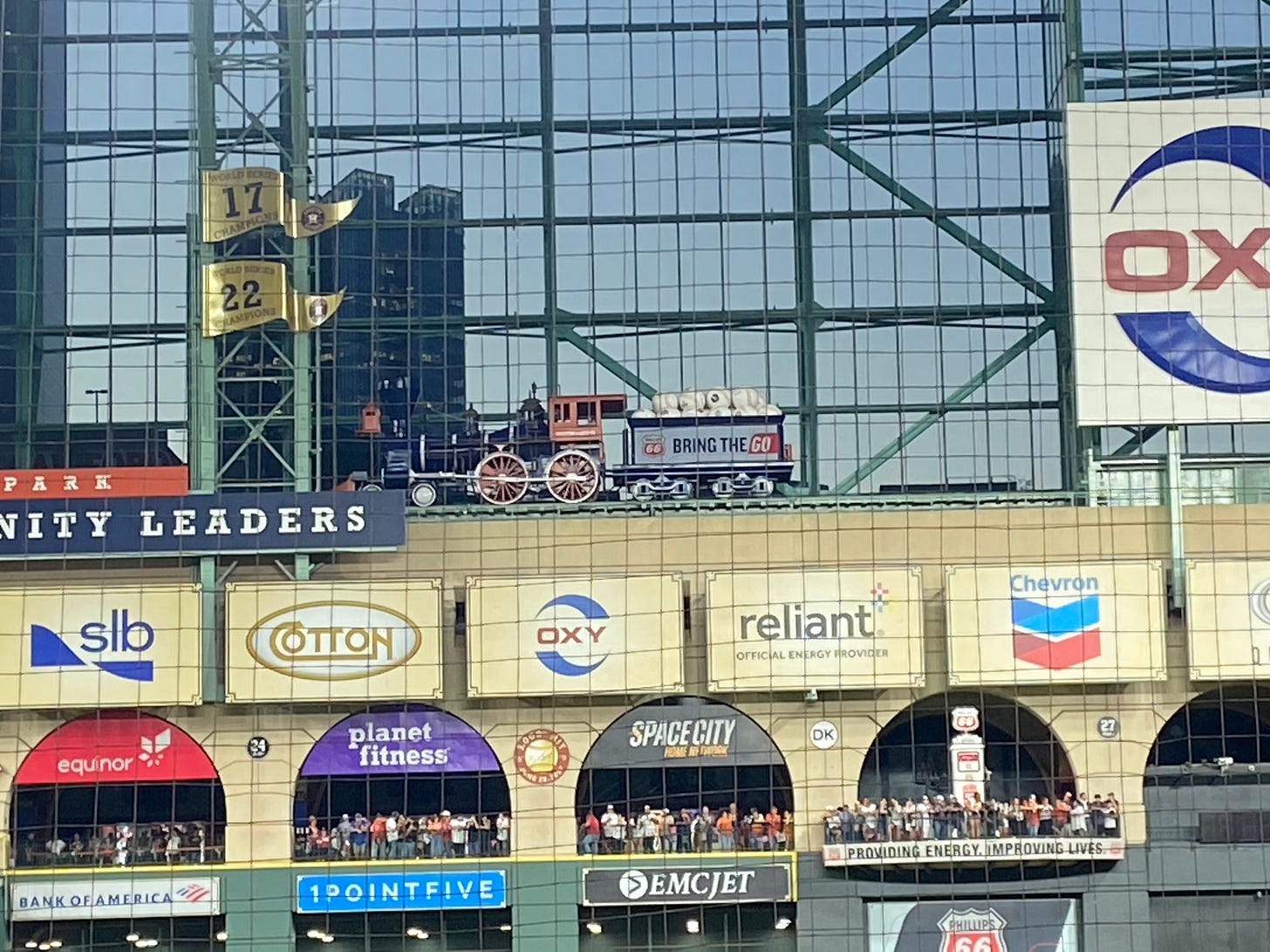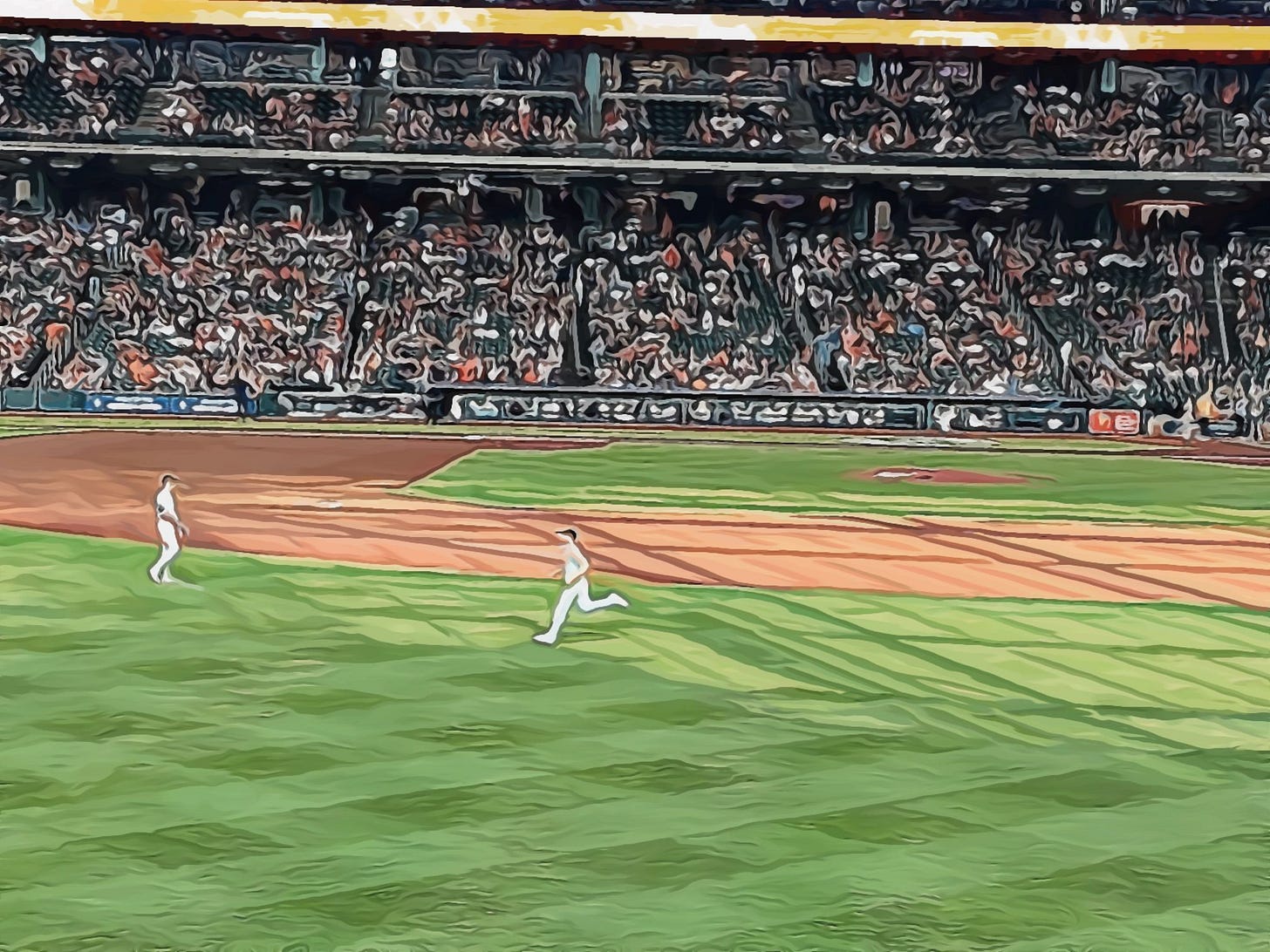I'll Say This About That - Volume I
Adding power, Nate Pearson and a potential reunion
This is the first in what may be a regular feature, commenting on various happenings around the Astros.
I haven’t done this previously because I’m not interested in flooding inboxes, but if I can put together two or three topics, I’ll share them as time and interest allow.
Getting Their Power Back
I have to admit to chuckling a bit when I read or hear that the Astros are searching for players who can add power to their lineup.
Was the Astros power down in 2025? Absolutely, as Houston finished tied for 16th in home runs (182) and 15th in slug (.399).
Middle of the road for sure and at times, non-existent.
How in the world could they improve that?
May I suggest a healthy Yordan Alvarez.
It’s not rocket science. In the three seasons Alvarez has played more than 114 games he has hit 33, 37 and 35 home runs, for an average of 35.
Last year he hit 6.
A healthy season likely means 29 more home runs for Yordan, pushing the Astros to 205 or so and likely into the top 10 in the league.
They would lose a few, with guys like Cooper Hummel, Taylor Trammell and the other gaggle of left fielders playing less.
For me, that solves 75% of your problem.
That said, there are areas for improvement and those are fairly obvious, too.
More than 3 home runs from your centerfielder would be a perfect place to start and perhaps around 15 or so from your right fielder and the problem is solved with nary a trade, 3-year $60 million contract on the books or free agent flyer.
Twenty-nine more from Yordan, 5 more from Jake Meyers (or Zach Cole) and 6 more from Cam Smith (or Cole, etc.) would put you around 222, just 2 short of the top 5 in the league.
The point is, a healthy Yordan largely solves the power problem, though there are a couple of other places that are lacking.
Nate Pearson Signing
The Astros signed Nate Pearson, a 29-year-old right-handed pitcher, to a guaranteed, 1-year, Major League contract for $1.35 million.
The intent is to make him into a starting pitcher, something Pearson has done only 6 times in his 123 MLB appearances with the Blue Jays and Cubs.
The team obviously sees something in Pearson that’s not obvious from his MLB performance to date, at least as it’s captured on BaseballSavant.com.
His numbers are either unremarkable or not good for the most part, but there are two that intrigued me: Pearson’s fastball velo (97.6 MPH) was in the 93rd percentile and his Extension was in the 83rd percentile.
Pearson has mainly been a four-seam and slider pitcher, as those two pitches accounted for 92.5% of his 2025 MLB pitches, but as Pearson explained on Chandler Rome’s podcast, that’s because of his role out of the bullpen.
He also throws a curve and a sinker.
This is reminiscent of the acquisition of Hayden Wesneski last year and making Wesneski a starter before his injury.
Wesneski doesn’t have the same velo, but he was in the 86th percentile in Extension, something the Astros covet.
It’s a low-risk gamble for a team that needs arms.
Justin Verlander Reunion?
On that same podcast, Rome mentioned the mutual interest between Justin Verlander and the Astros.
Verlander missed a month last season with an injury and at one point, was 0-8 with a 4.99 ERA.
That eventually reached 1-9 with a 4.53 ERA and I thought he was cooked.
However, from that point on, JV put together 9 starts, 52.2 innings, 42 hits, and a 2.56 ERA, including 6 quality starts to finish the season.
Verlander will be 43 in February, so any deal would be a short one, in my opinion, no matter who he signs with.
He made $15,000,000 in San Francisco last season.
Reunions aren’t always good, and at best, Verlander would be a stopgap until a younger arm develops or is traded for, but as mentioned above, the Astros need reliable arms to fill starter innings, and JV threw 152 of those last season.
Thanks for reading!



